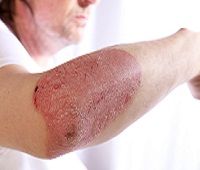Article
Longer-wave Laser Effective in KP Symptom Treatment
Author(s):
According to a recent study published in JAMA Dermatology, a longer wavelength laser is an effective treatment option for keratosis pilaris (KP), a skin condition in which skin proteins form hard plugs within hair follicles, for improving skin roughness and textural irregularities.

According to a recent study published in JAMA Dermatology, a longer wavelength laser is an effective treatment option for keratosis pilaris (KP), a skin condition in which skin proteins form hard plugs within hair follicles, for improving skin roughness and textural irregularities.
The study suggested that although KP is typically resistant to treatment, shorter wavelength lasers that can reduce erythema associated with the condition do not quite make the cut when it comes to “smoothing out textural irregularities”. As such, the primary purpose of the study was to determine whether the longer-wavelength 810-nm diode laser would be more effective overall.
The randomized clinical trial, conducted from March to October 2011 involved 23 patients with KP on both of their arms as well as Fitzpatrick skin types I through III. After 7 months, 18 patients completed the study, 3 were unavailable for follow-up, and 2 withdrew due to inflammatory hyperpigmentation following laser treatment.Patients were randomized to receive treatment twice, for a total of 3 treatment visits, with the 810-nm pulsed diode laser on either the right or left arm.
The primary outcome measure for the study was the difference in disease severity score, including redness and roughness, with each graded on a scale of 0 to 3 (least to most severe), between both the treated and control sites. Two blinded dermatologists rated the sites at the 12-week mark compared to the initial visit.
The authors concluded, “Three treatments with the 81-nm diode laser may induce significant improvements in skin texture and roughness/bumpiness in KP patients with Fitzpatrick skin types 1 through 111, but baseline erythema is not improved. Complete treatment of erythema and texture in KP may require diode laser treatment combined with other laser or medical modalities that address redness.”





